Discover the Serenity of Guiyuan Temple: A Journey Through History and Culture
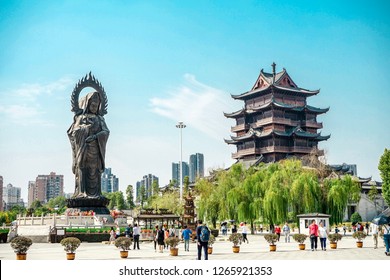
An Essential Guide to Visiting Guiyuan Temple
In This Guide
- An Essential Guide to Visiting Guiyuan Temple
- The Rich History and Legends of Guiyuan Temple
- Main Highlights: What You Absolutely Can’t Miss
- Planning Your Visit: A Practical Guide
- Tickets: Prices, Booking, and Tips
- How to Get There: A Complete Transportation Guide
- Local Cuisine and Accommodation Nearby
- Frequently Asked Questions
- Final Thoughts on Your Trip
Nestled in the heart of Wuhan, Guiyuan Temple (归元禅寺) is a serene oasis that offers a glimpse into China’s rich spiritual heritage. Established in 1658, this temple stands as one of the most significant Buddhist sites in the region, attracting both locals and international travelers alike. As you step through its ancient gates, you’ll find yourself enveloped in a world of tranquility, where the hustle and bustle of modern life fades away, and the whispers of history beckon.
Guiyuan Temple is particularly famous for its 500 golden Arhats, intricately crafted figures that embody the Buddhist ideals of wisdom and compassion. These revered statues are not only a visual feast for the eyes but also a symbolic representation of the teachings of Buddhism. Visitors are often encouraged to count the Arhats, a charming tradition that adds a touch of whimsy to your spiritual exploration and promises a bit of luck.
The temple is also a vibrant hub of local culture, where Wuhan residents regularly come to pray for blessings. On the fifth day of the Lunar New Year, the temple becomes a bustling site for the traditional ritual of “robbing the head of incense,” an event that draws hundreds of thousands of pilgrims seeking the favor of the God of Wealth. This blend of daily devotion and festive celebration creates an inviting atmosphere, making it a must-visit destination for anyone interested in understanding the spiritual life of the Chinese people.
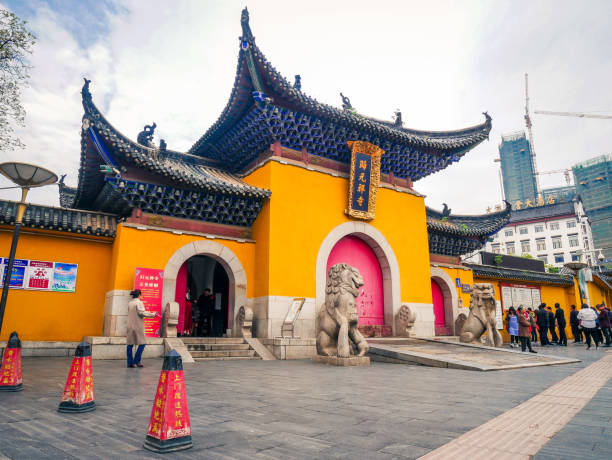
Guiyuan Temple.
While visiting, be prepared for a few restrictions, such as the prohibition of photography inside the temple—a measure that underscores the importance of maintaining its sacred ambiance. However, moments of quiet reflection in the temple’s peaceful halls and gardens, including the charming turtle garden, offer a unique opportunity to connect with your surroundings.
So, whether you’re seeking spiritual enlightenment, cultural insights, or simply a moment of peace away from the city’s chaos, Guiyuan Temple is an essential stop on your journey through Wuhan.

Guiyuan Temple.
The Rich History and Legends of Guiyuan Temple
Nestled in the heart of Wuhan, Guiyuan Temple (归元禅寺) offers a serene retreat that echoes centuries of history and spiritual significance. Established in 1658 during the early Qing Dynasty, this temple is revered as one of the most significant Buddhist temples in central China. Its rich tapestry of history is woven with legends, traditions, and practices that continue to attract pilgrims and tourists alike.
A Historical Overview
Guiyuan Temple was originally founded by Master Yichu, a monk dedicated to promoting Chan Buddhism, which emphasizes meditation and direct experience of enlightenment. The temple has undergone several renovations and expansions over the centuries, particularly during the late Qing and early Republic periods, allowing it to maintain its status as a center of spiritual practice and community gatherings.
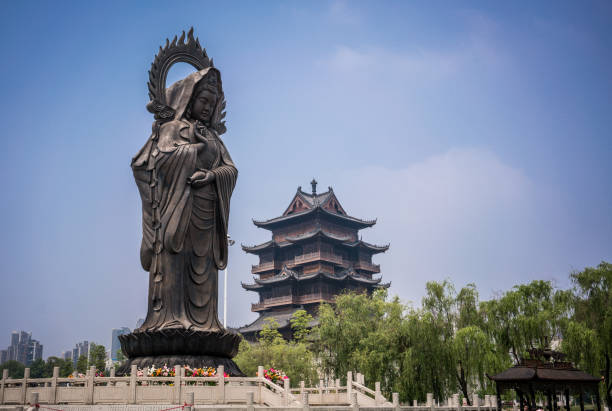
Guiyuan Temple.
The temple complex features exquisite architecture, with ornate halls and tranquil gardens that reflect traditional Chinese aesthetics. Among its most notable structures is the Arhat Hall, which houses an astonishing collection of 500 golden Arhats—each uniquely designed. Visitors are often encouraged to count these figures as a playful way to invoke good fortune.
Legends and Cultural Practices
Guiyuan Temple is steeped in local legends that add to its allure. One popular belief is associated with the fifth day of the lunar new year, a time when hundreds of thousands of pilgrims flock to the temple to “rob the head of incense.” This tradition, rooted in the desire to gain blessings and prosperity, sees devotees competing to light incense first, as it is believed to bring good luck and favor from the God of Wealth.
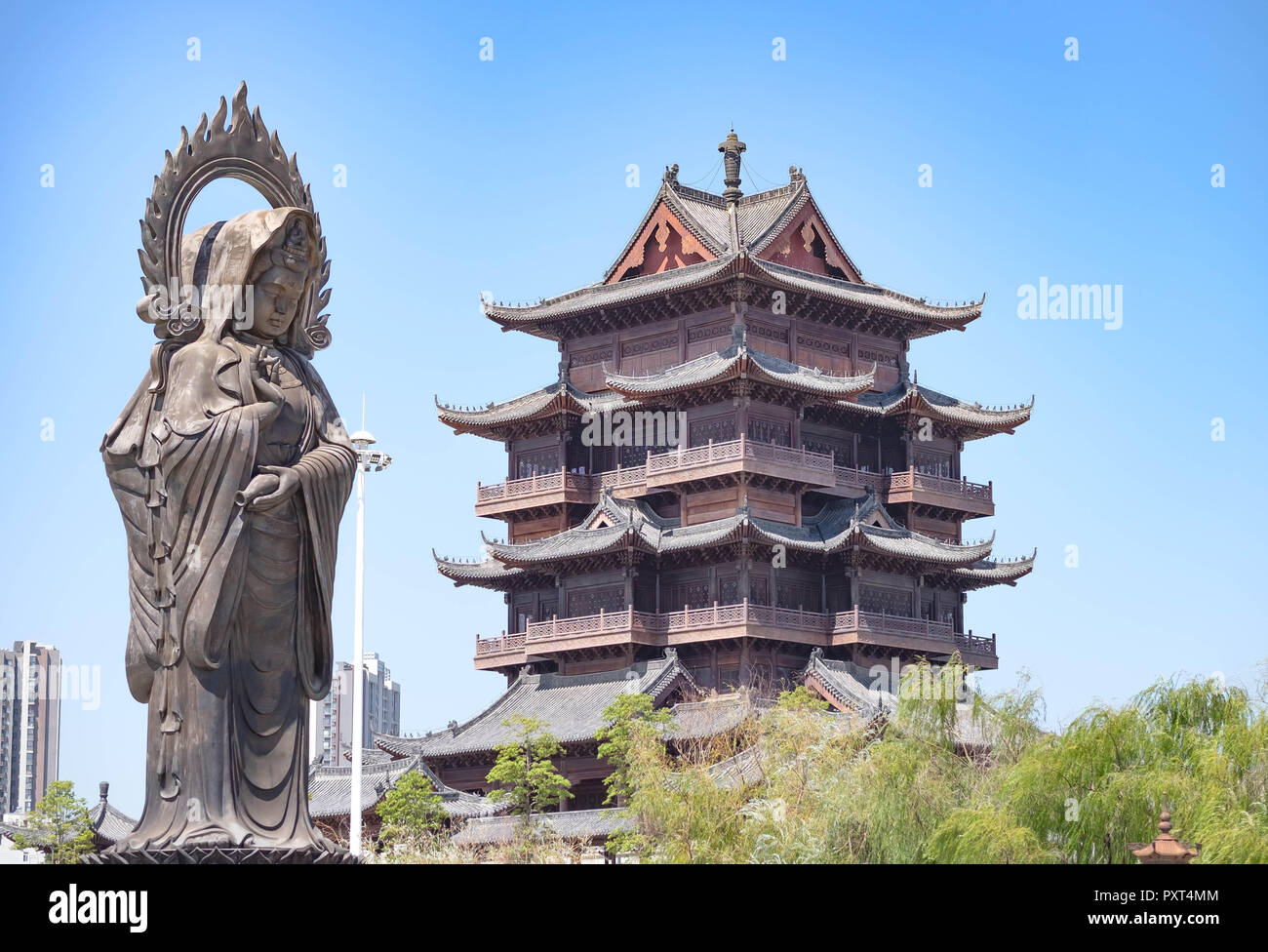
Guiyuan Temple.
The temple grounds are also home to a charming turtle garden, where visitors can observe these gentle creatures—symbols of longevity and wisdom in Chinese culture. Many locals believe that interacting with the turtles enhances their chances of good fortune, making it a beloved spot for both worshippers and tourists.
Spiritual Significance
For the people of Wuhan, Guiyuan Temple is more than a historical site; it is a vibrant spiritual hub. Daily rituals and ceremonies draw locals who seek blessings for health, wealth, and happiness. The temple serves as a reminder of the deep-rooted Buddhist traditions that have shaped the cultural landscape of the region. The tranquil atmosphere invites meditation and reflection, providing an escape from the hustle and bustle of modern life.
Visitor Experience
While visiting Guiyuan Temple, guests are immersed in a profound sense of peace and spirituality. Despite some restrictions on photography—an effort to maintain the sanctity of the sacred spaces—visitors often leave with lasting memories and a deeper appreciation for Buddhist practices. The contrast between the serene temple environment and the lively city of Wuhan underscores the temple’s role as a sanctuary for contemplation and prayer.
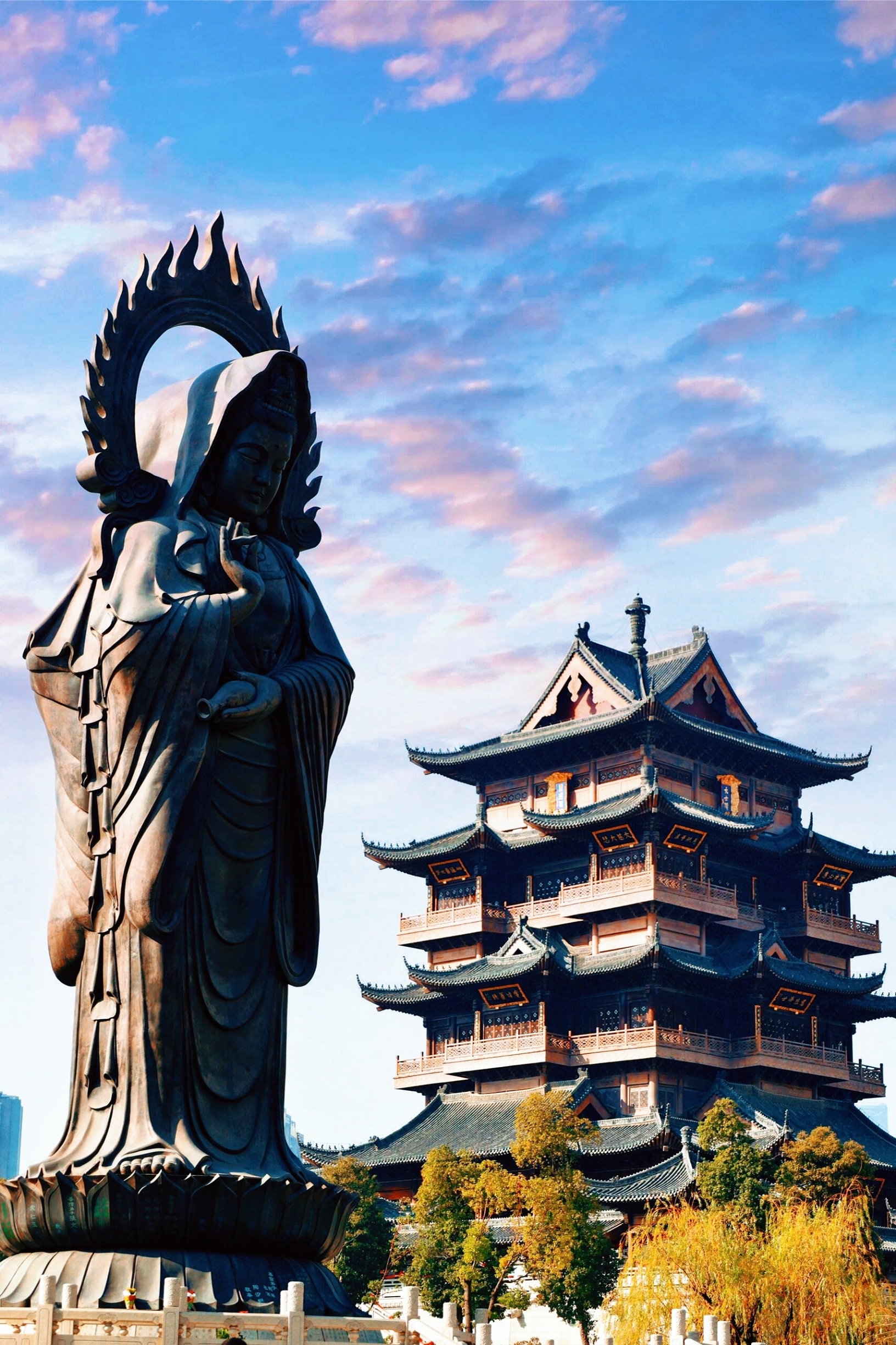
Guiyuan Temple.
In summary, Guiyuan Temple stands as a testament to the rich history and vibrant culture of Wuhan. Its legends, architectural beauty, and spiritual significance make it a must-visit destination for international travelers eager to explore the depths of Chinese history and Buddhism. Whether you are seeking spiritual enlightenment or simply a moment of tranquility, Guiyuan Temple is sure to leave an indelible mark on your journey through China.
Main Highlights: What You Absolutely Can’t Miss
Unveiling the Wonders of Guiyuan Temple
Nestled in the heart of Wuhan, Guiyuan Temple (归元禅寺) is a serene oasis that offers visitors a window into China’s rich spiritual heritage and architectural beauty. Established in 1658, this temple is revered not only as a place of worship but also as a cultural landmark where local traditions thrive. Here are the main highlights you absolutely can’t miss during your visit.
1. The Majestic Arhat Hall
One of the temple’s most striking features is the Arhat Hall, home to 500 golden Arhats (enlightened beings in Buddhist tradition). Each Arhat is uniquely crafted, presenting a wonderful opportunity for visitors to engage in a bit of fun—try to count them all! This hall embodies the temple’s spiritual significance and showcases exquisite artistry that reflects the devotion of its creators.
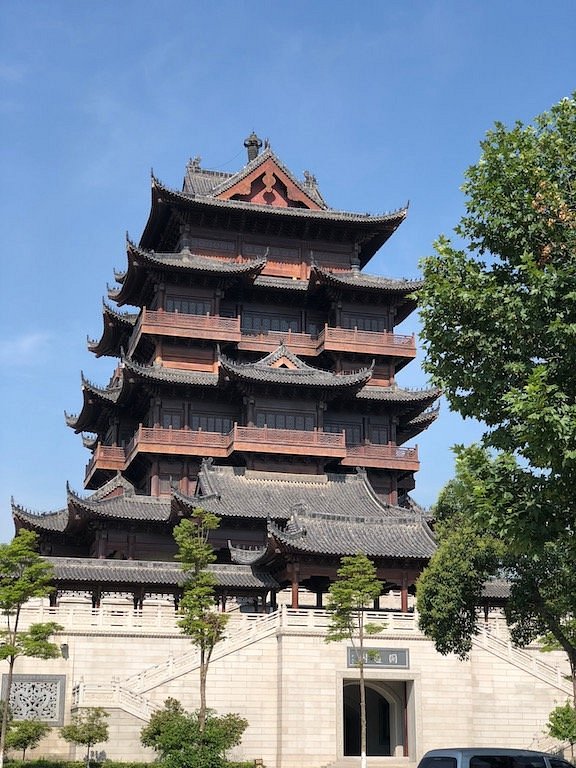
Guiyuan Temple.
2. Turtle Garden
As you wander through the temple grounds, make sure to visit the Turtle Garden. This tranquil space is not only a haven for the turtles that inhabit it but also serves as a peaceful retreat for visitors seeking reflection and harmony. The gentle ambiance, combined with the sight of these ancient creatures, provides an excellent backdrop for contemplation.
3. Ceremonial Practices
Experience the vibrant local customs that pulse through the temple, especially during the Spring Festival celebrations. On the fifth day of the lunar new year, thousands of pilgrims flock here to participate in the “rob the head of incense” tradition, a ritual to worship the God of Wealth. This unique event is a sight to behold, allowing visitors to immerse themselves in local culture and spirituality.
4. Architectural Splendor
Guiyuan Temple itself is an architectural marvel. The intricate carvings, traditional wooden structures, and serene courtyards reflect traditional Chinese temple design. Take a moment to appreciate the craftsmanship that has preserved this site through centuries, offering a glimpse of the Ming and Qing dynasties’ architectural styles.
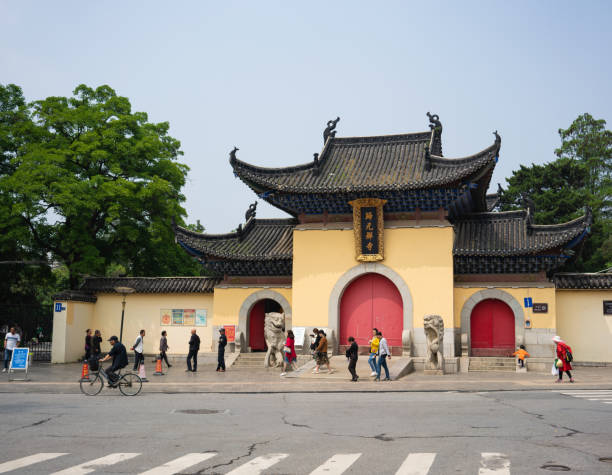
Guiyuan Temple.
5. Respectful Reverence
While you may be eager to capture the beauty of Guiyuan Temple through photographs, it’s essential to respect the temple’s regulations prohibiting photography inside worship areas. This rule is in place to maintain the sanctity of the space. Instead, focus on absorbing the spiritual atmosphere, allowing the tranquility to wash over you.
Practical Tips
- Location: Guiyuan Temple is located at No.20 Cuiwei Road, Zhongjia Village, Hanyang District, Wuhan.
- Visiting Hours: Check local listings for the hours of operation, as they may vary, especially during festivals.
- Dress Code: Visitors are encouraged to dress modestly, in keeping with the temple’s religious significance.
- Transportation: Accessible via public transport, consider using local buses or ride-sharing apps for convenience.
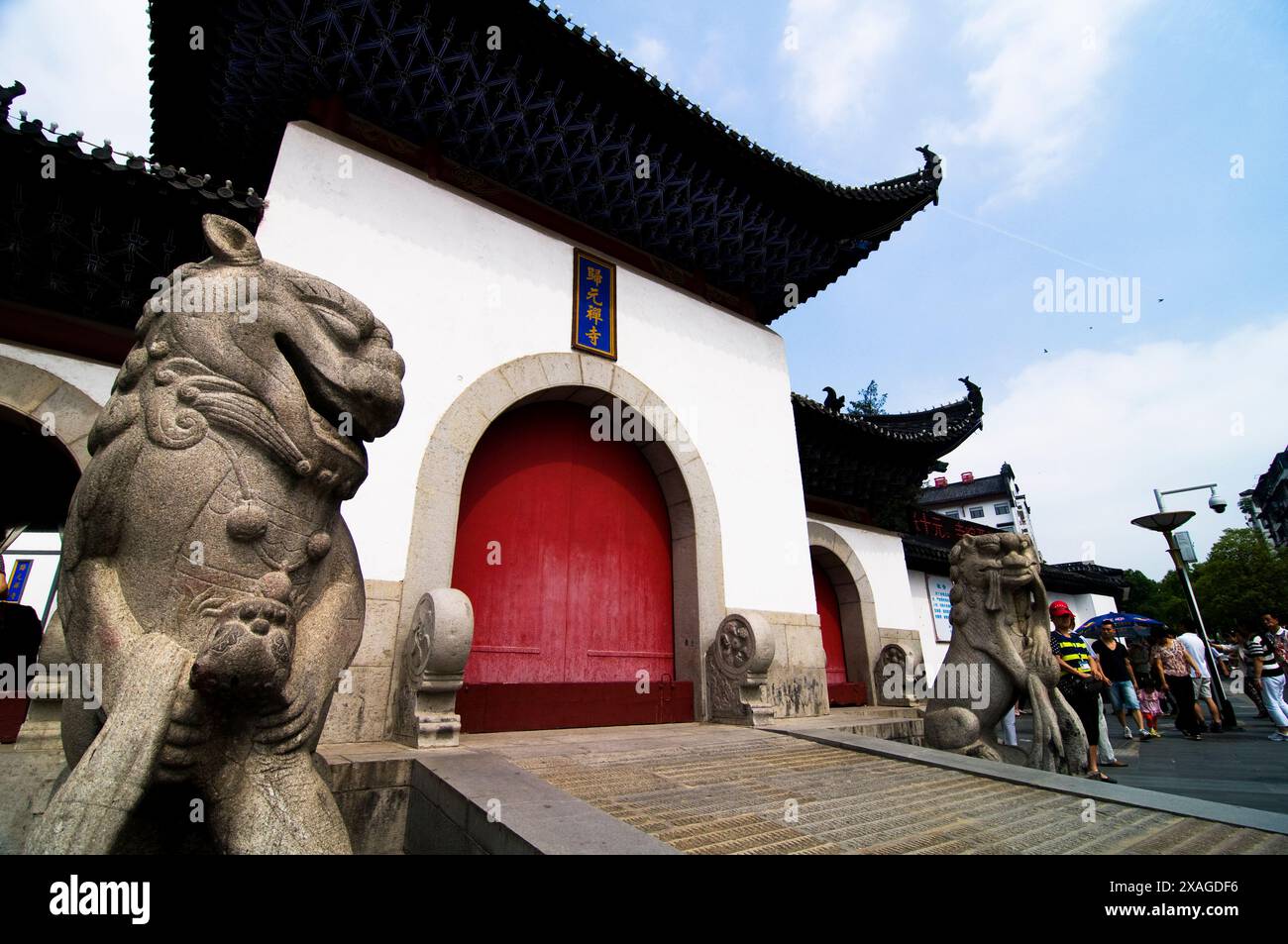
Guiyuan Temple.
Conclusion
A visit to Guiyuan Temple is not just a journey through history; it’s an exploration of the spiritual essence that permeates Wuhan. With its breathtaking architecture, vibrant local traditions, and serene atmosphere, this temple is a must-see for anyone interested in Chinese culture and history. Embrace the opportunity to connect with the past and present, and let the calm of Guiyuan Temple inspire your travels.
Planning Your Visit: A Practical Guide
Discovering Guiyuan Temple: Your Essential Visitor’s Guide
Nestled in the heart of Wuhan, Guiyuan Temple (归元禅寺) is a serene oasis steeped in history and culture. Founded in 1658, this temple is not only a significant site for Buddhist worship but also a fascinating destination for those looking to immerse themselves in traditional Chinese spirituality. Here’s everything you need to know to make the most of your visit.
Getting There
Address:
No.20 Cuiwei Road, Zhongjia Village, Hanyang District, Wuhan 430050, China
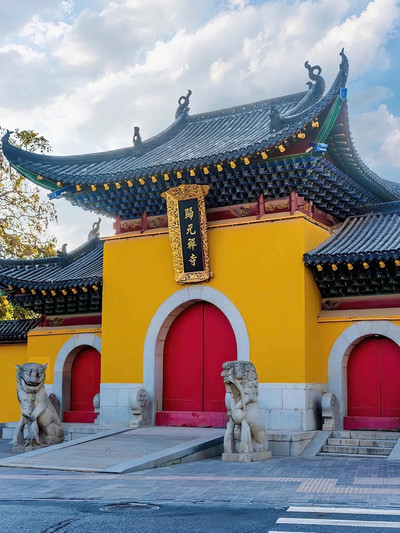
Guiyuan Temple.
Public Transport:
– Metro: The closest metro station is Hanyang Railway Station (汉阳火车站). From there, you can take a taxi or walk to the temple.
– Bus: Multiple bus lines service the area. Look for buses heading to Hanyang District.
Taxi Services:
Taxis are a convenient option, and most drivers are familiar with Guiyuan Temple. Ensure you have the temple’s name written in Chinese (归元禅寺) to show the driver.
Opening Hours and Admission
- Hours: Open daily from 8:00 AM to 5:00 PM.
- Admission: Entry to the temple is typically free, but donations are appreciated to help maintain the site.
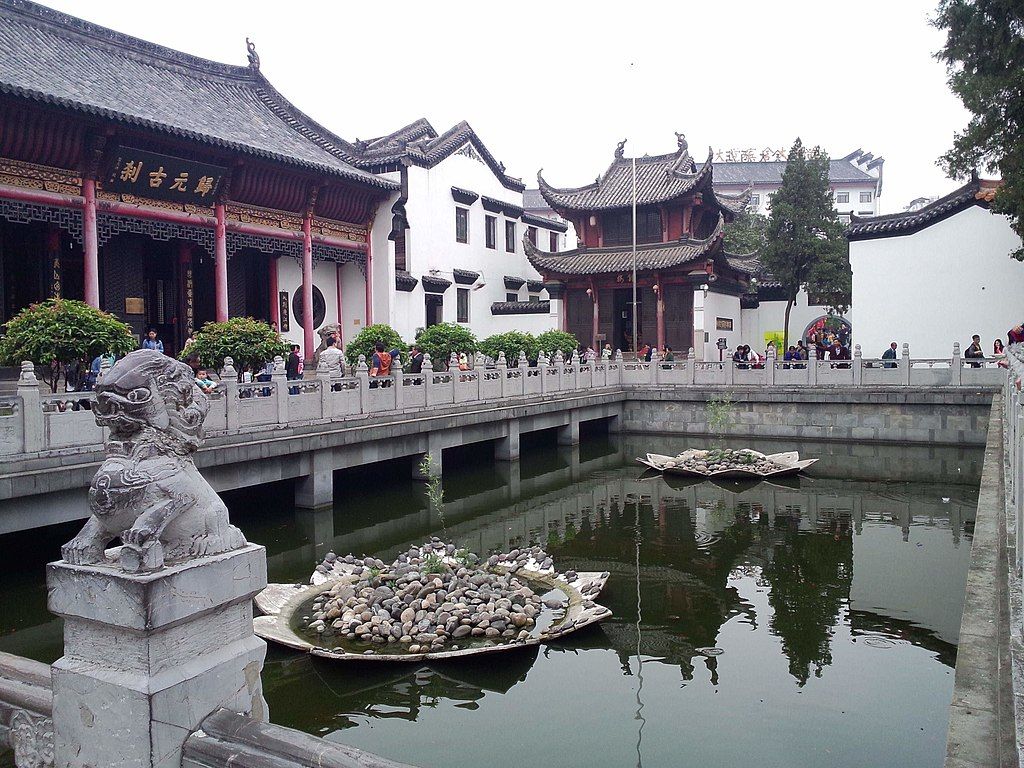
Guiyuan Temple.
What to Expect
Atmosphere:
As you enter Guiyuan Temple, prepare to be enveloped in a sense of tranquility and reverence. The temple features beautiful architecture, intricate carvings, and the iconic Arhat Hall, home to 500 golden statues of Arhats. Each statue is unique, making a visit here not just spiritual but also a delightful visual experience.
Photography Rules:
Photography is not allowed within the temple premises to respect the sanctity of the site. While this may be disappointing for some, it’s a practice that upholds the religious atmosphere. You may want to capture the beauty of the exterior and the gardens surrounding the temple instead.
Turtle Garden:
One of the highlights of your visit will be the Turtle Garden, a peaceful area where you can reflect and enjoy the intricate landscape. It’s a lovely spot for contemplation or simply soaking in the serene environment.
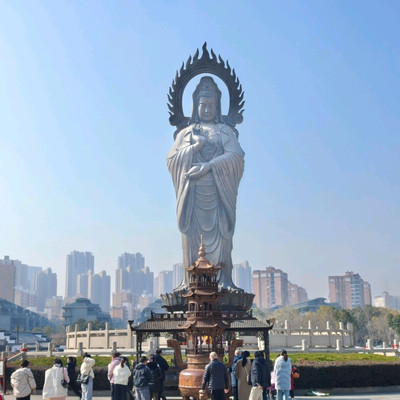
Guiyuan Temple.
Cultural Insights
- Local Worship Practices: Guiyuan Temple is a popular destination for locals who come to pray for blessings. On the fifth day of the Lunar New Year, the temple sees a surge of visitors as pilgrims seek to “rob the head of incense,” a traditional practice associated with prosperity.
- Rituals and Offerings: Expect to see various rituals performed by worshippers, including offering incense and ribbons to the Buddha. Be mindful of these customs and observe quietly.
Nearby Attractions
After visiting Guiyuan Temple, consider exploring other nearby sites to enrich your cultural experience:

Guiyuan Temple.
- Yellow Crane Tower: A historic tower with stunning views of the Yangtze River, just a short distance away.
- Wuhan Yangtze River Bridge: An iconic landmark that offers picturesque views and a glimpse into the city’s engineering feats.
- Hubu Alley: Known for its local snacks and street food, this bustling alley is perfect for tasting Wuhan’s culinary delights.
Dining Options
While there are no dining facilities within the temple, several eateries nearby offer a range of options:
- HeShui HuoYu: A highly-rated seafood restaurant just half a mile from the temple.
- Dai Mei Hot Pot: A great place to experience traditional Chinese hot pot, located about 0.6 miles away.
Tips for a Smooth Visit
- Dress Respectfully: As a place of worship, it’s important to dress modestly. Avoid shorts and sleeveless tops.
- Mind Your Voice: Maintain a respectful volume to preserve the quiet atmosphere of the temple.
- Be Prepared for Crowds: If visiting during peak times, especially around the Lunar New Year, expect larger crowds and plan your visit accordingly.
Conclusion
Guiyuan Temple is more than just a historical site; it’s a living testament to the rich spiritual heritage of China. Whether you’re drawn by its architectural beauty, cultural significance, or simply a desire for tranquility, a visit to this temple is sure to be a memorable highlight of your journey through Wuhan.
Tickets: Prices, Booking, and Tips
When planning a visit to Guiyuan Temple (归元禅寺), it’s essential to understand the ticketing process, prices, and some helpful tips to enhance your experience at this significant cultural and historical site in Wuhan.
Ticket Information
Admission Fee:
Guiyuan Temple is renowned for its accessibility, with no entrance fee required for visitors. This allows everyone to immerse themselves in the serene atmosphere and rich history of the temple without financial barriers.
Purchasing Ribbons:
Upon arrival, you may notice vendors selling colorful ribbons, which are often mistaken for tickets. These ribbons are intended for offerings to Buddha. However, be aware that some visitors have reported being told that these ribbons are considered “bad luck” once inside the temple. This could be a tactic to encourage additional purchases, so approach with caution if you choose to buy them.
Booking Tips
-
Timing Your Visit:
To experience the tranquility of the temple, consider visiting during weekdays or early in the morning. Weekends and holidays can attract large crowds, especially during significant cultural events like the Lunar New Year celebrations, when thousands of pilgrims gather. -
Respect the Rules:
Photography is not permitted within the temple grounds. While it may be tempting to capture the beautiful architecture and serene environment, adhering to this rule is crucial for maintaining the sanctity of the site. Instead, focus on immersing yourself in the experience. -
Explore the Surroundings:
The temple is located in a vibrant neighborhood with many nearby attractions. After your visit, consider exploring local eateries or other cultural sites like the Yellow Crane Tower or Hubu Alley. -
Engage with Locals:
If you’re interested in understanding the temple’s significance, try conversing with local visitors or temple staff. Many Wuhan residents frequent Guiyuan Temple to pray for blessings, particularly during special occasions. -
Plan Your Stay:
If you’re interested in delving deeper into Wuhan’s cultural heritage, look into nearby accommodations that allow easy access to the temple and other attractions. This will enable you to explore the area at your own pace.
Conclusion
Guiyuan Temple is more than just a historic site; it’s a place of worship and tranquility that offers a glimpse into the spiritual life of the local community. By understanding the ticketing process and following these tips, you can ensure a fulfilling visit to this cherished landmark in Wuhan.
How to Get There: A Complete Transportation Guide
When planning your visit to the serene and historic Guiyuan Temple in Wuhan, understanding your transportation options is essential for a smooth journey. Here’s an in-depth look at how to reach this cultural gem, nestled in the heart of Hanyang District.
Getting to Guiyuan Temple from Wuhan’s Major Transport Hubs
By Air
If you’re arriving by air, Wuhan Tianhe International Airport (WUH) is the primary airport serving the city. From the airport, you can choose from several transportation options:
- Taxi: The most convenient option, taking approximately 30-40 minutes, depending on traffic. Expect to pay around 100-150 RMB (15-23 USD).
- Airport Shuttle: Look for the airport shuttle bus that heads toward Hankou Railway Station. You can then transfer to a taxi or public transport to reach the temple.
By Train
Wuhan is well-connected by rail, with three main railway stations: Wuhan Station, Hankou Station, and Wuchang Station. Here’s how to get to Guiyuan Temple from each:
- Wuhan Station:
-
Metro: Take Line 4 (blue line) to the Hanyang Road Station, then transfer to Line 1 (red line) and disembark at the Hanyang District stop. From there, it’s a short taxi ride (approximately 15 minutes) to the temple.
-
Hankou Station:
-
Metro: Take Line 3 (light green line) to the Hongshan Square Station, then switch to Line 4 and follow the same route as above.
-
Wuchang Station:
- Taxi: Directly take a taxi, which should take around 25-30 minutes.
By Public Transport
Wuhan’s public transport system is extensive and efficient. If you’re already in the city, consider these options:
- Metro:
-
The closest metro station to Guiyuan Temple is Huanghe Road Station on Line 4. From there, it’s a short taxi ride or a 20-minute walk to the temple.
-
Buses:
- Several bus lines serve the vicinity, including routes 515, 716, and 902. Check local transit apps for the most accurate information on schedules and stops.
Navigating Within Wuhan
- Taxis and Ride-Hailing Apps: Using apps like Didi Chuxing is a popular way to get around. Simply input “Guiyuan Temple” in Chinese (归元禅寺) for ease of communication with drivers.
- Bicycles: Wuhan has a bike-sharing system that allows you to rent bicycles for short trips. It’s a pleasant way to explore the area around the temple, especially if the weather is nice.
Tips for Your Visit
- Best Time to Visit: To experience the temple at its most tranquil, consider visiting early in the morning or during weekdays.
- Respectful Conduct: As a place of worship, remember to maintain a respectful demeanor, refrain from taking photos inside, and observe any local customs during your visit.
By planning your transportation wisely, you’ll ensure a fulfilling visit to Guiyuan Temple—one of Wuhan’s most cherished historical sites. Enjoy your journey through this remarkable intersection of culture and spirituality!
Local Cuisine and Accommodation Nearby
Nestled in the heart of Wuhan, Guiyuan Temple is not just a spiritual haven but also a gateway to experiencing the region’s rich culinary traditions and comfortable accommodations. After immersing yourself in the serene ambiance of the temple, you can delight your palate and find a place to rest nearby. Here’s a snapshot of the local cuisine and the best accommodations to consider during your visit.
Culinary Delights
Wuhan’s food scene is vibrant, blending traditional flavors with modern twists. Here are some local restaurants that you shouldn’t miss:
-
HeShui HuoYu
Distance: 0.5 mi
This seafood restaurant offers a fresh take on local flavors, especially known for its hot pot dishes. The warm, inviting atmosphere makes it an excellent spot for a family meal or a casual dinner with friends. -
Dai Mei Hot Pot
Distance: 0.6 mi
Indulge in a quintessential Chinese dining experience at this hot pot restaurant. With a variety of broths and fresh ingredients, it’s perfect for those looking to engage in a communal eating experience. -
XinNong Beef Noodles
Distance: 0.6 mi
A favorite among locals, this eatery serves delicious beef noodles that are both comforting and flavorful. It’s a great spot for a quick bite after a visit to the temple. -
BiXi BieShu HuiSuo
Distance: 1 mi
Offering a fusion menu that merges traditional Chinese elements with contemporary flair, this restaurant is perfect for adventurous diners. -
AiJia YuanRong CanYin
Distance: 1 mi
This vegan-friendly spot is ideal for health-conscious travelers, serving a variety of plant-based dishes that are both delicious and satisfying.
Nearby Accommodations
After a day of exploration, you’ll want a comfortable place to unwind. Here are some nearby accommodations that cater to different budgets:
-
Wuhan Yicheng Hotel
This hotel offers clean, modern rooms and is conveniently located just a short distance from Guiyuan Temple. It’s a fantastic choice for travelers seeking comfort without breaking the bank. -
Novotel Wuhan Xinhua
A more upscale option, this hotel provides a blend of luxury and practicality with excellent amenities, including a gym and dining facilities. Its central location makes it easy to explore other attractions in Wuhan. -
Hanting Express Wuhan Cuiwei Road
For budget-conscious travelers, this express hotel offers basic yet comfortable accommodations, providing a good balance between cost and convenience. -
Wuhan East Lake Hotel
Located a bit further but offering picturesque views, this hotel is perfect for those looking to enjoy nature alongside their historical explorations.
Conclusion
Visiting Guiyuan Temple opens the door to a multitude of local flavors and comfortable accommodations that enhance your journey through Wuhan. Whether you’re savoring a steaming bowl of beef noodles or relaxing in a cozy hotel, the unique blend of culture, history, and cuisine will undoubtedly enrich your travel experience. Make sure to take the time to indulge in the local offerings and rest up for another day of exploration in this vibrant city!
Frequently Asked Questions
Frequently Asked Questions about Guiyuan Temple
1. What is the significance of Guiyuan Temple?
Guiyuan Temple, founded in 1658 during the Qing Dynasty, is one of Wuhan’s most important Buddhist temples. It serves as a spiritual haven for locals who visit to pray for blessings and participate in traditional rituals, particularly during the Lunar New Year.
2. Are there any unique features to look out for in the temple?
One of the standout features of Guiyuan Temple is the Hall of Arhats, which houses 500 golden statues of Arhats (Buddhist saints). Visitors often enjoy the challenge of counting the Arhats, which is believed to bring good luck.
3. Can I take photographs inside the temple?
Unfortunately, photography is not permitted inside Guiyuan Temple to respect its sacred atmosphere. While some visitors may feel disappointed by this rule, it is important to honor the temple’s religious significance.
4. When is the best time to visit?
The temple sees a significant influx of visitors during the fifth day of the Lunar New Year, when thousands come to “rob the head of incense,” a popular ritual for worshipping the God of Wealth. For a quieter experience, consider visiting on weekdays or outside of major festivals.
5. What are the visitor facilities like?
Guiyuan Temple offers a serene environment, complete with gardens, including a turtle garden which adds to the tranquil atmosphere. However, amenities such as restrooms and food options are minimal within the temple grounds.
6. Is there an entrance fee?
While there may be a nominal fee for certain activities or offerings, general entry to Guiyuan Temple is often free. Be prepared to purchase items like incense or ribbons for offerings if you wish to participate in the rituals.
7. How do I get to Guiyuan Temple?
Guiyuan Temple is located at No. 20 Cuiwei Road, Zhongjia Village, in the Hanyang District of Wuhan. It is accessible via public transport, including buses and the metro. Visitors can also consider taking a taxi or rideshare service for convenience.
8. What other attractions are nearby?
After visiting Guiyuan Temple, you can explore other nearby attractions such as the iconic Yellow Crane Tower, the Wuhan Yangtze River Bridge, and the bustling Hanzheng Street for shopping and local cuisine. Each offers a glimpse into Wuhan’s rich history and vibrant culture.
Final Thoughts on Your Trip
As you conclude your journey through the tranquil atmosphere of Guiyuan Temple, take a moment to reflect on the rich tapestry of history and spirituality that envelops this sacred site. Founded in 1658, this temple stands as a testament to Wuhan’s enduring cultural heritage, inviting visitors to connect with centuries of Buddhist traditions and local customs.
A Place of Serenity and Reflection
Visiting Guiyuan Temple is more than just a sightseeing experience; it is an opportunity to immerse yourself in a serene environment where the hustle and bustle of modern life recedes into the background. The 500 golden Arhats in the Arhat Hall, each with its unique expression, offer a captivating glimpse into Buddhist artistry. Perhaps you’ll even take on the challenge of counting them—an age-old tradition believed to bring good luck!
Embrace Local Customs
Don’t miss the chance to witness the vibrant local customs, especially during significant festivals. The fifth day of the lunar new year draws in hundreds of thousands of pilgrims who gather to “rob the head of incense,” seeking blessings from the God of Wealth. Engaging in these traditions allows you to connect with the local community and gain insights into the spiritual life of the people of Wuhan.
A Respect for Tradition
While you may feel tempted to capture the beauty of the temple through photographs, the prohibition against photography underscores a deep respect for the sacredness of the space. Instead, let your memories be shaped by the sights, sounds, and smells—the scent of incense, the whispers of prayer, and the peaceful rustling of leaves in the turtle garden.
Final Thoughts
In closing, your visit to Guiyuan Temple is a journey into both the heart of Wuhan and the essence of Chinese spirituality. Carry the peace you find here with you, and allow it to inspire your travels ahead. Whether you seek enlightenment, tranquility, or simply a deeper understanding of Chinese culture, Guiyuan Temple offers a unique chapter in the story of your adventures. Embrace it, cherish it, and let it enrich your exploration of this fascinating country.